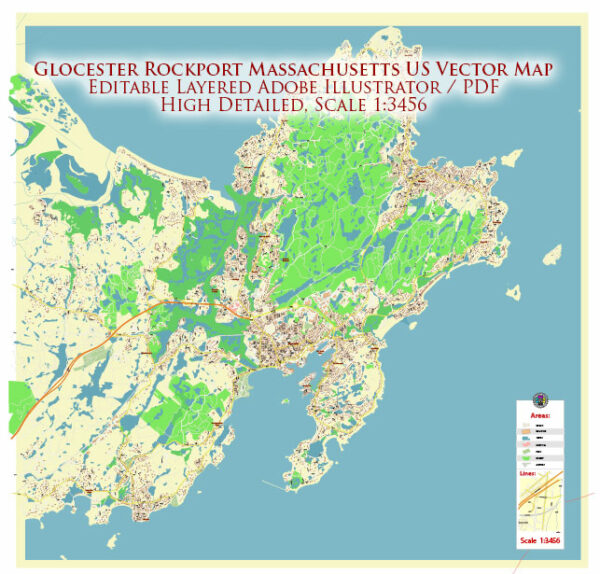Gloucester and Rockport, both located in Essex County, Massachusetts, have rich histories that are closely tied to the development of the United States. Here’s a brief overview of the urban development history of Gloucester and Rockport:
Gloucester:
- Early Settlement: Gloucester was first settled in 1623, making it one of the oldest European settlements in the United States. The town’s early economy was based on fishing, and it quickly became a prominent center for the fishing industry.
- Maritime Industry: Throughout the 18th and 19th centuries, Gloucester thrived as a major fishing port. The Gloucester fisherman became renowned for their skills and bravery. The iconic Gloucester Fisherman’s Memorial, erected in 1923, pays tribute to those who lost their lives at sea.
- Industrialization: The 19th century saw the growth of other industries, including granite quarrying and shipbuilding. The construction of the Grand Banks fishing schooners became a significant part of Gloucester’s economy.
- Artistic Community: In the late 19th and early 20th centuries, Gloucester became a haven for artists, attracting painters such as Winslow Homer and Fitz Henry Lane. The town’s scenic beauty and maritime culture inspired a vibrant artistic community.
- Urban Expansion: Gloucester experienced urban expansion in the 20th century, with the growth of residential areas and the development of infrastructure. The city has preserved its historic character, and the downtown area showcases a mix of historic buildings and modern amenities.
Rockport:
- Early Settlement: Rockport was settled in the late 17th century as part of Gloucester but was incorporated as a separate town in 1840. Its early economy was also based on fishing and granite quarrying.
- Quarrying Industry: Rockport became known for its granite industry in the 19th century. The granite quarried in Rockport was used in the construction of buildings such as the Custom House Tower in Boston and the Brooklyn Bridge.
- Artistic Influence: Similar to Gloucester, Rockport attracted artists seeking inspiration from its picturesque landscapes. The town became known for its art colonies, contributing to its cultural identity.
- Tourism: In the 20th century, Rockport’s economy shifted towards tourism. The scenic beauty, art galleries, and unique shops drew visitors seeking a charming coastal experience.
- Preservation Efforts: Both Gloucester and Rockport have made efforts to preserve their historic charm. Many buildings in Rockport showcase New England architecture, and the town has worked to maintain a balance between development and preservation.
Today, Gloucester and Rockport continue to be vibrant communities, blending their rich histories with modern amenities and a focus on preserving their unique cultural and architectural heritage.


 Author: Kirill Shrayber, Ph.D.
Author: Kirill Shrayber, Ph.D.